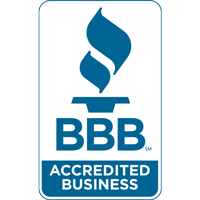
Ceiling fans are one of the most underrated ways to enhance comfort and cut energy costs. By boosting air circulation and assisting your HVAC system, ceiling fans and energy efficiency are truly a perfect combination. They offer a practical, eco-friendly way to stay cool while reducing strain on your AC—even preventing unnecessary air conditioning repair.
In this blog, the experts at Total Assurance AC & Heating discuss how ceiling fans can improve your comfort while saving you money thanks to increased HVAC efficiency. We'll also share some HVAC efficiency tips that make the most of ceiling fans.
Comfort vs. Temperature: Getting Comfortable with the Wind-Chill Effect Indoors
Ceiling fans don’t actually lower the room temperature—they make you feel cooler by blowing air across your skin. This is referred to as the wind-chill effect, and it can make a room feel up to 4 degrees cooler without touching the thermostat. That means you feel less hot and enjoy the benefits of indoor air circulation from your ceiling fan while minimizing air conditioner use—helping reduce your electric bill in summer.
The Best of Both: Why You Should Use Fans and Air Conditioning Together
There are several benefits to using ceiling fans and air conditioning at the same time, especially when it's very hot outside. By pairing both, you maximize HVAC efficiency and enjoy a cooler living space with less work from your cooling system.
Why you should use ceiling fans and AC together:
- Ceiling fans help lower HVAC load by distributing cool air more evenly throughout rooms in your home. Decreasing HVAC stress is important, because it can help you avoid a breakdown that could lead to premature AC or furnace installation.
- Using overhead fans enhances comfort by reducing uneven temperatures and enhancing circulation.
- Running both ceiling fans and AC can lower your utility usage. If you have a home automation system, you can even adjust your smart thermostat settings to increase the temperature slightly while your ceiling fan is running.
Clockwise vs. Counterclockwise Ceiling Fan Rotation: Which is the Correct Direction?
To get the most out of your ceiling fans year-round, it’s important to ensure blades are rotating in the proper direction for the season. The direction affects how air moves, which can either or redistribute heat so you feel warmer.
When to rotate ceiling fans counterclockwise
On hot days, ceiling fans should rotate counterclockwise at a quick speed. This creates a breeze that pushes cool air downward, increasing the wind-chill effect and creating a cooler sensation.
When to rotate ceiling fans clockwise
On cold days, set your fan to rotate clockwise on a slower speed. This gently pulls cool air upward and draws warm air downward from the ceiling, helping you feel warmer without changing your thermostat.
What Type of Ceiling Fan Is Best
Picking the right ceiling fan depends on a few critical considerations, such as blade design, airflow rating and room dimensions. First, look for fans with a good blend of ECFM airflow and blade pitch to provide efficient air movement in your home:
- ECFM refers to the amount of air a fan circulates—the cubic feet per minute, or CFM—per watt of electricity it uses. Fans with higher ECFM are more energy efficient.
- Blade pitch is the angle of the blades. A sharper blade pitch moves more air than a shallower pitch but can also strain the motor.
Also, consider room size when sizing a ceiling fan—a fan that’s too small won’t move as much air as you'd like, while one that’s too large may be overpowering for the room.
Boost Your HVAC Efficiency With the Team from Total Assurance AC & Heating
At Total Assurance AC & Heating, our HVAC technicians can help you enjoy year-round comfort while reducing strain on your heating and cooling systems. From practical fan advice and air conditioning installation to smart thermostats and furnace repair, we offer comprehensive services that match your needs. Set up your appointment by calling 361-446-6925 today.

